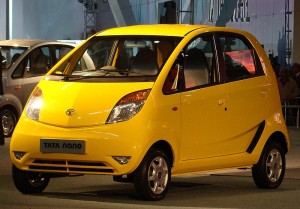Learn to Use Reverse Innovation
I kept my eyes on the blurring, chaotic stream of Mumbai traffic, looking for the famed “Tata Nano”—the cheapest car in the world. To be honest, I don’t think I saw one, but then again, I’m not sure I would recognize it crammed between moto-rickshaws and the tiny black Soviet-era-looking taxi cabs swerving around pedestrians crossing streets.

But I know they are out there, because everyone is talking about it. Indian business people I spoke to bring it up regularly in conversation as a symbol of India’s emerging flavor of innovation. Everyone is picking apart this marvel, seeking to gain insights seemingly to answer one question: why did this happen in India?
I was conducting a workshop with Hermann Simon, one of the world’s leading gurus on what he calls “hidden champions”—(mostly German) companies that you have never heard of but that dominate a global niche like making glass for museum cases—and he was proud to say that about 50% of Tata’s components are manufactured by German companies.
And that fact just agitates our need to answer the question: if much of the technology for the Tata Nano is manufactured in Germany, why was this innovation born in India?
What we are witnessing with the Tata Nano is what is commonly referred to as “reverse innovation”—or a process that begins by focusing on the need for low-cost products for countries like India and China and then adapting that innovation for the developed world.
If a German car company was tasked with developing the “cheapest car in the world,” the end result would most likely be a car priced just under the competition and with just enough “stuff” to still give it feel of a high-quality German car. But by understanding what price tag they had to beat to capture the Indian market, Tata was able to engineer a vehicle that caught everyone by surprise—the customer with a price tag of one-half of the closest alternative ($2,000 per car) and the engineering community with a product that, at first sight, seemed a bit surprising to many—with smaller wheels, a unique mix of materials and a movable steering wheel to reduce the cost of having to adapt it to different driving customs.
India offered the perfect environment to introduce the Tata Nano—it has a need and the Tata Nano can fill it. What a perfect example of how a well-organized business can look at its current technology or service and see how it can use reverse innovation to create something new and needed. Ask yourself the following questions to see how you can offer a new product or service that new customers need.
1. What is the biggest puzzle or bottleneck in your industry that your competitors are trying to stay away from, and how can you turn it into your competitive advantage by learning from other unorthodox players in other countries or industries?
2. How can you use your current technology or service to provide something new?
3. Who could use this new service or product?
Kaihan Krippendorf (www.kaihan.net), a founding Fellow of the Center for Leadership and an adjunct professor in the College of Business Administration, is the author of Hide a Dagger Behind a Smile and The Way of Innovation. This article was originally written as an entry for his FastCompany.com blog “The Outthinker: Mavericks that Out Innovate the Competition.” The opinions expressed in this column are the writer’s and do not necessarily reflect the views or opinions of either FIU or the College of Business Administration.
View all articles by Kaihan Krippendorff.




